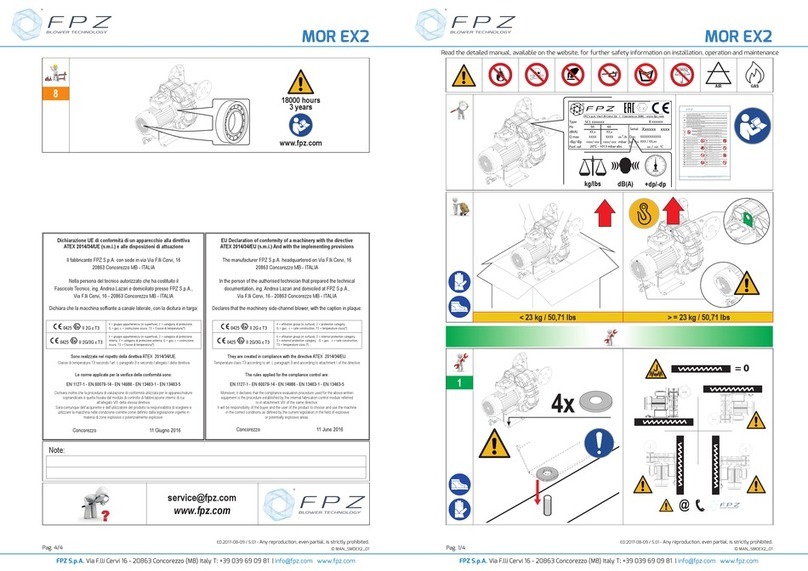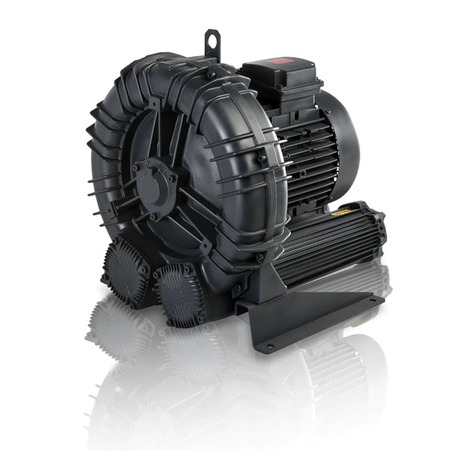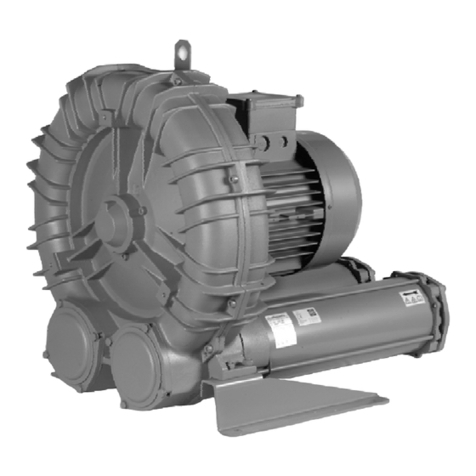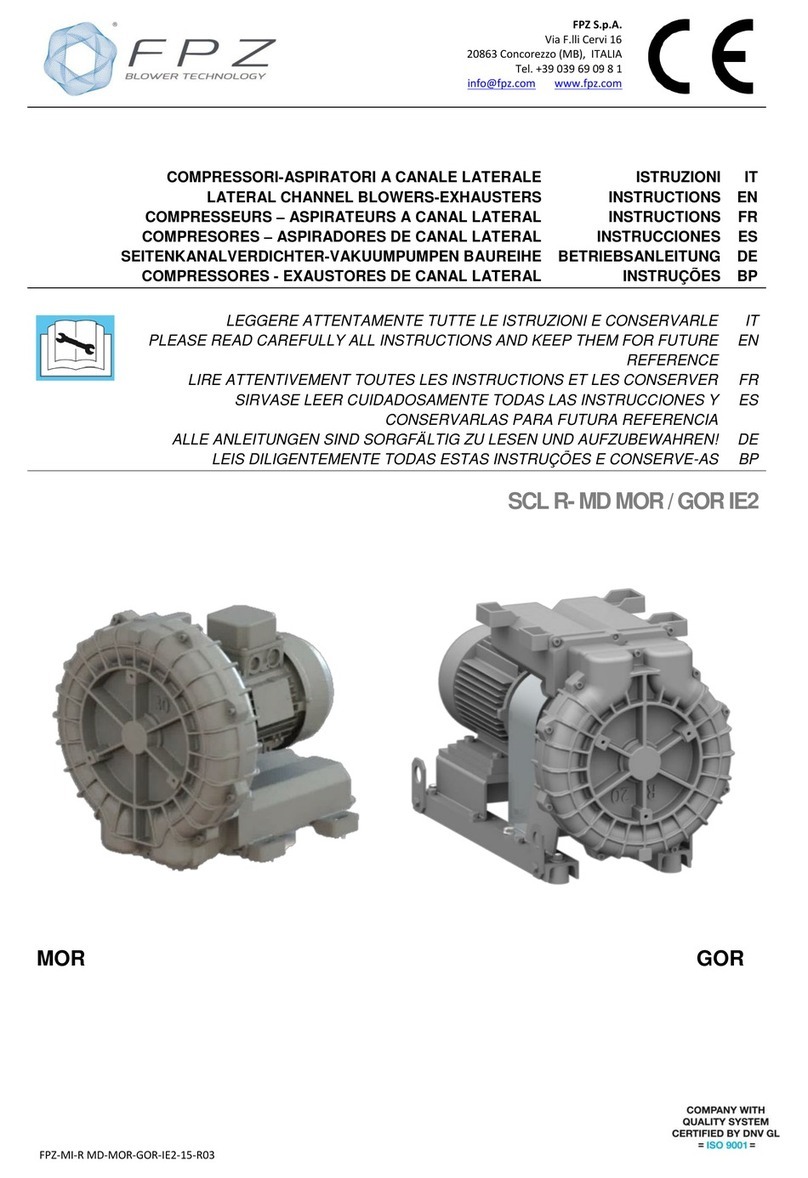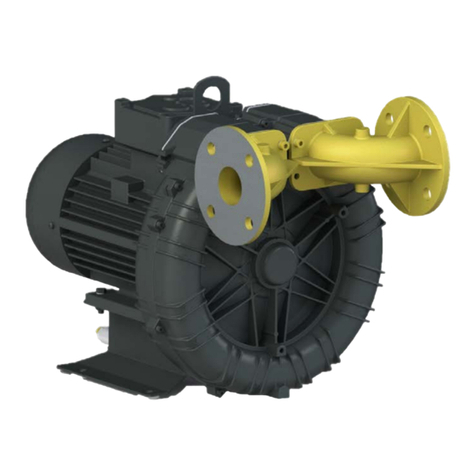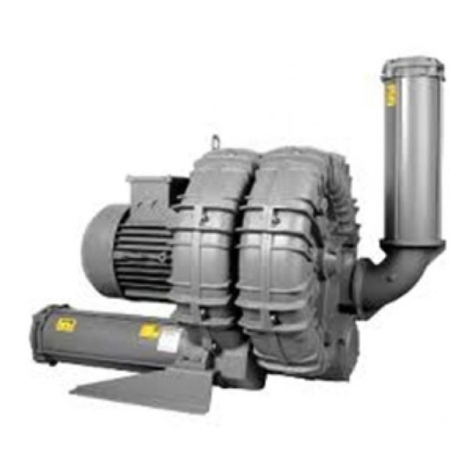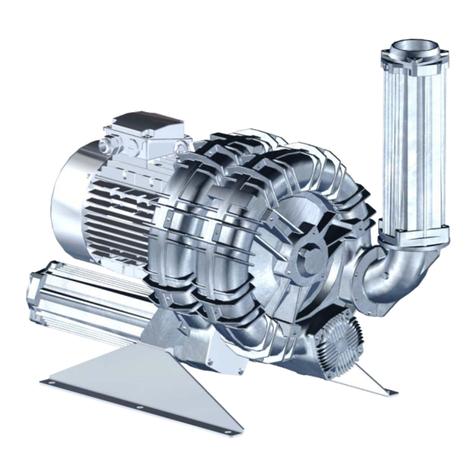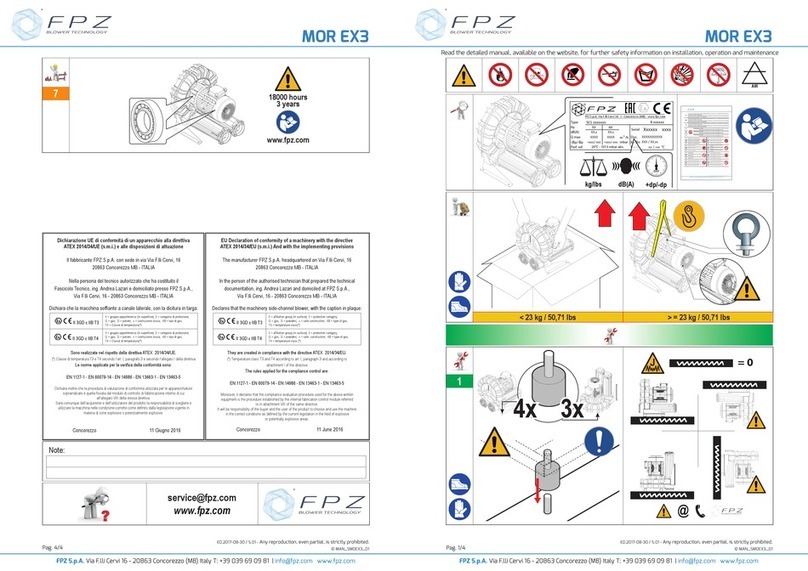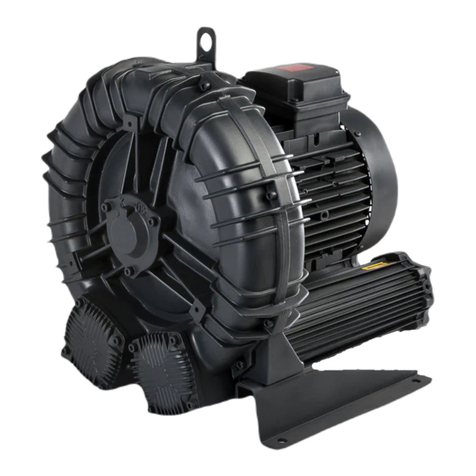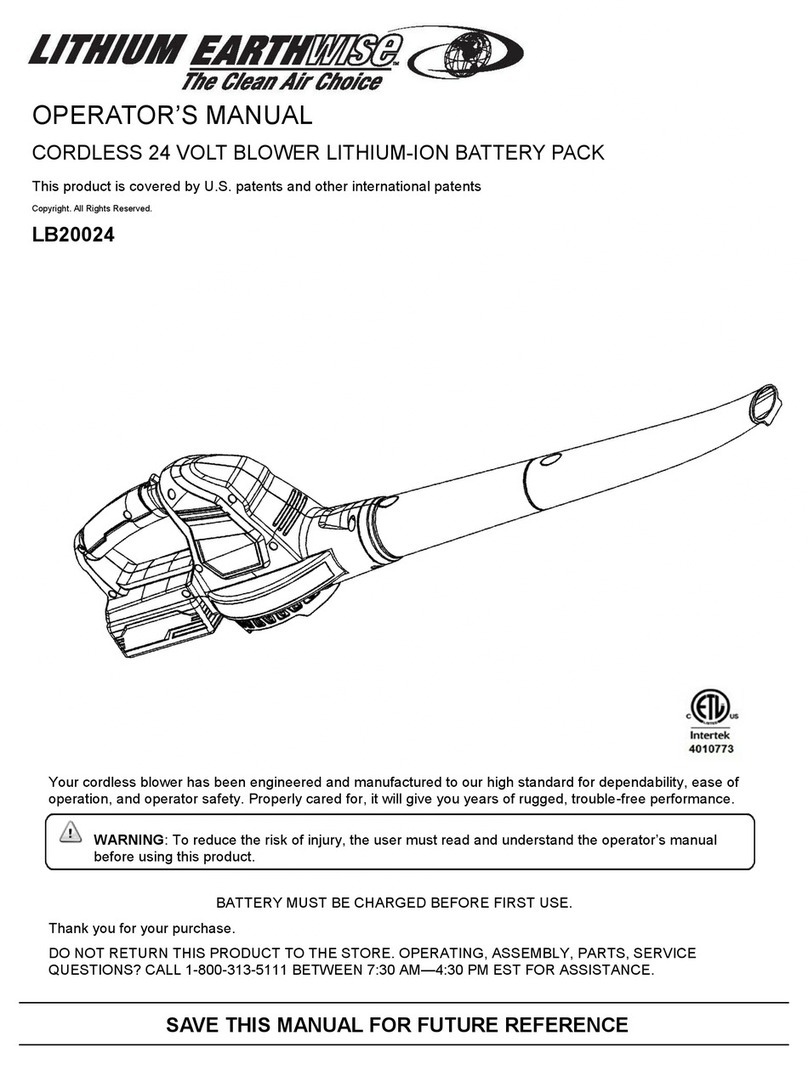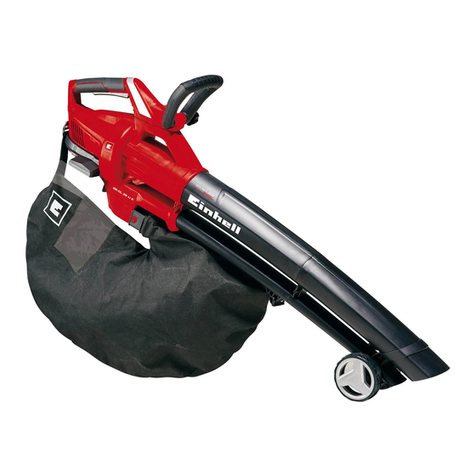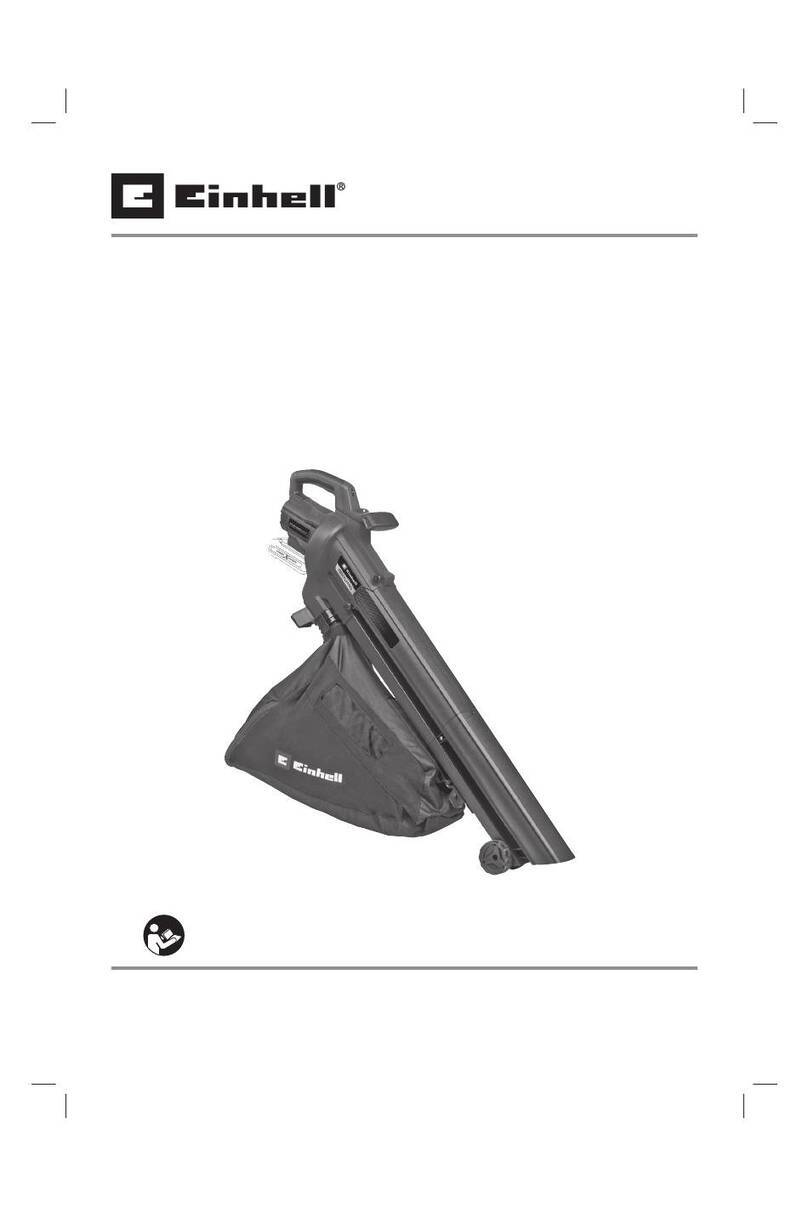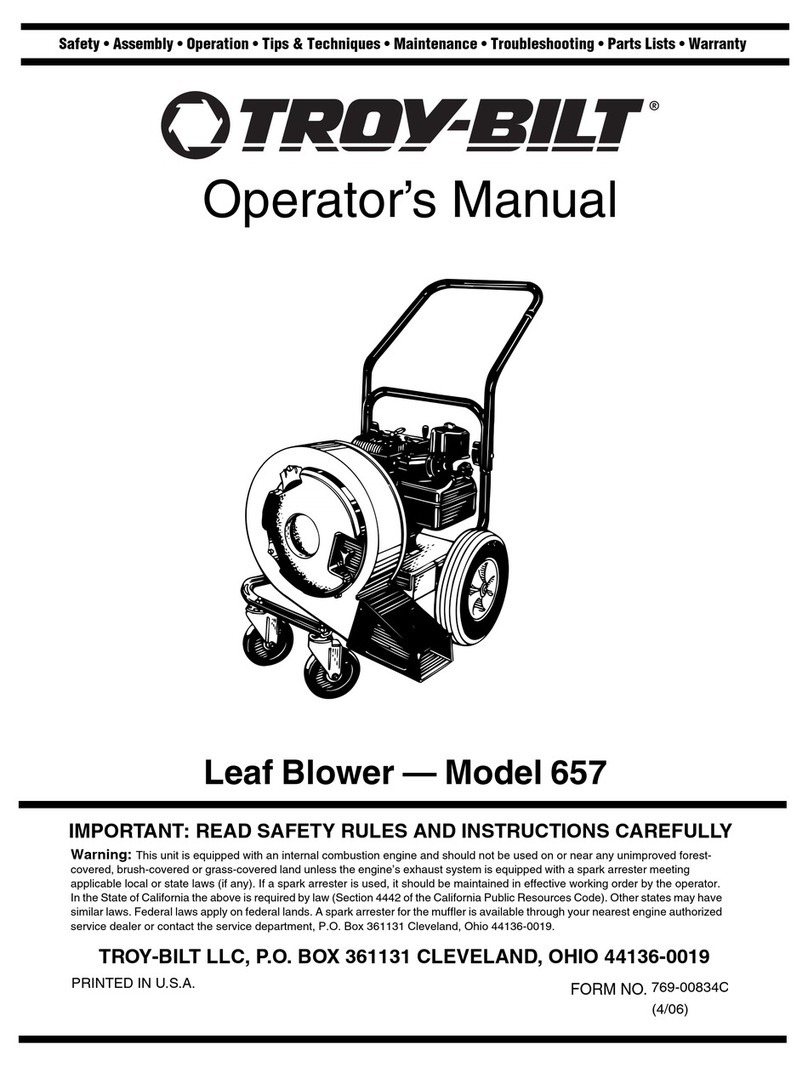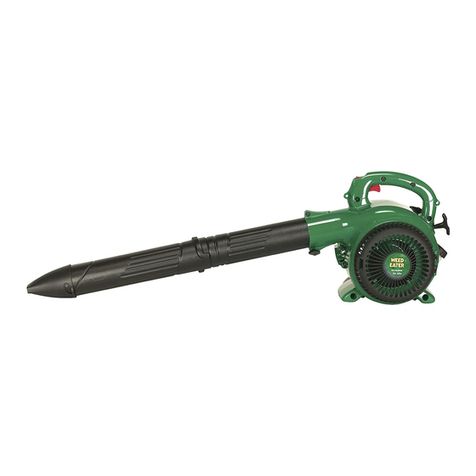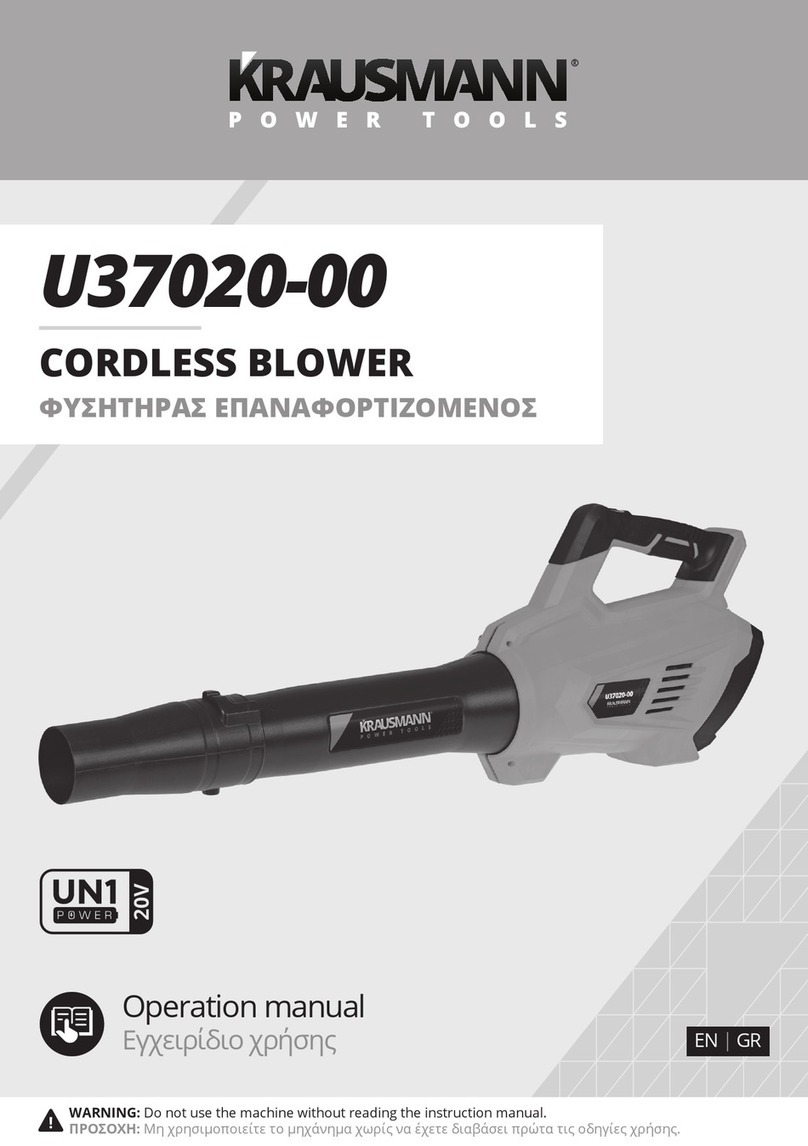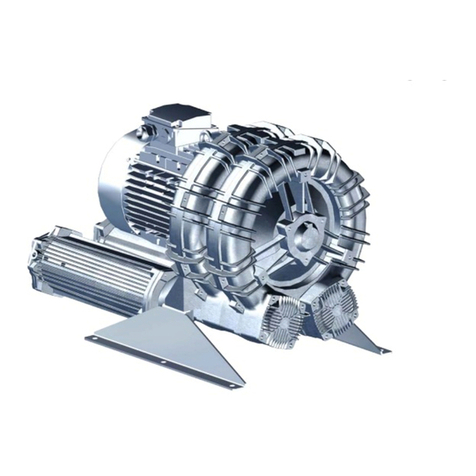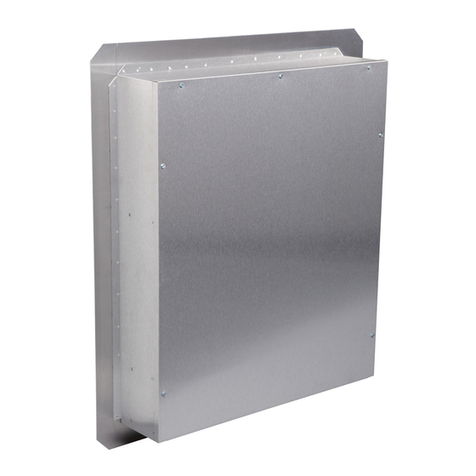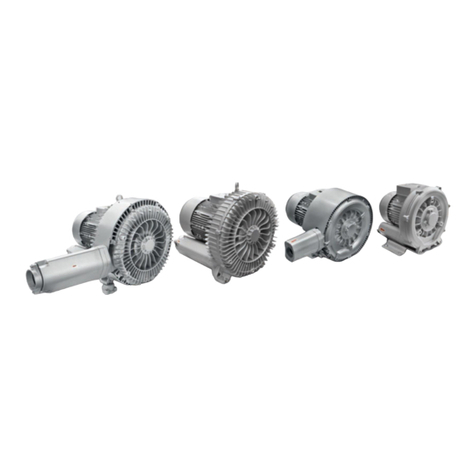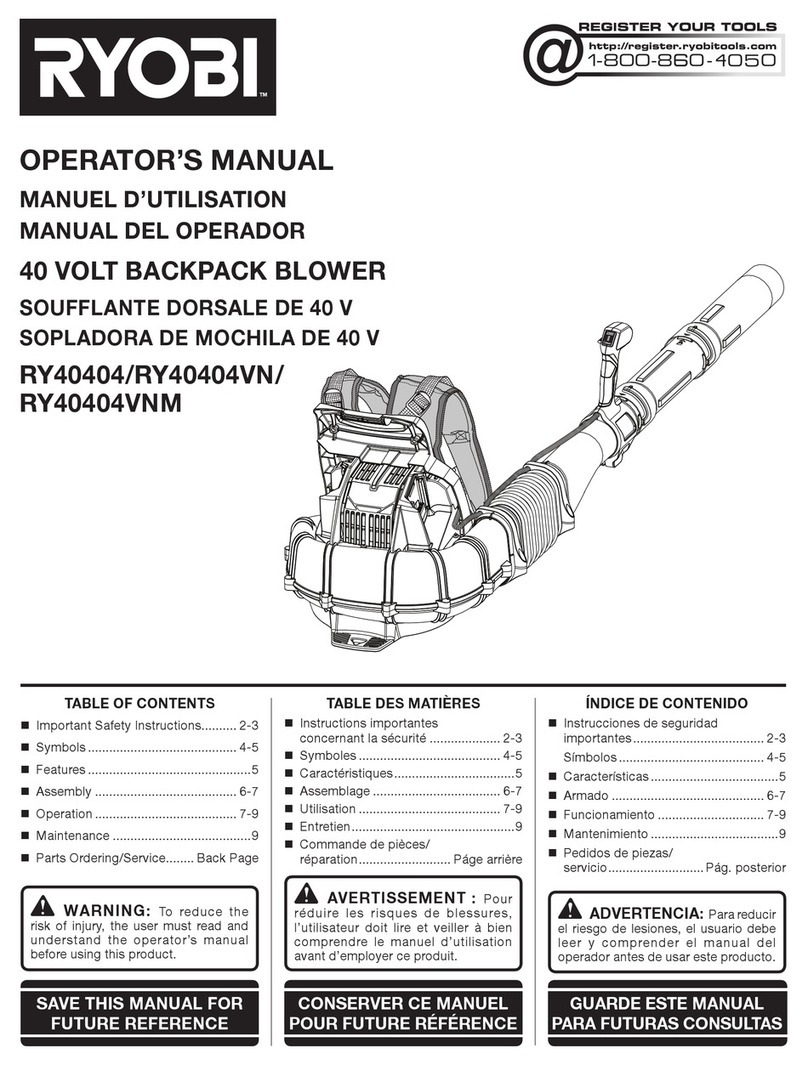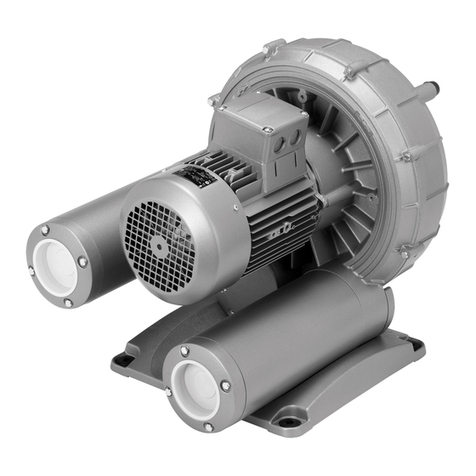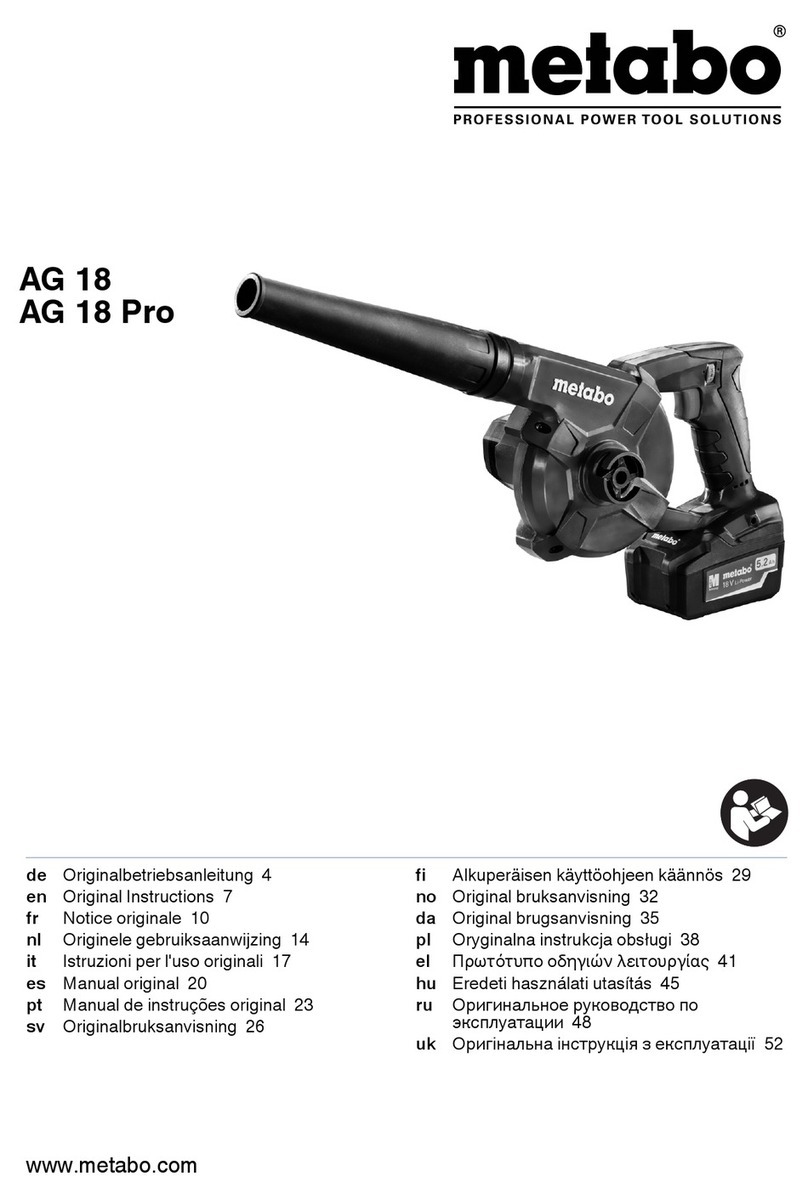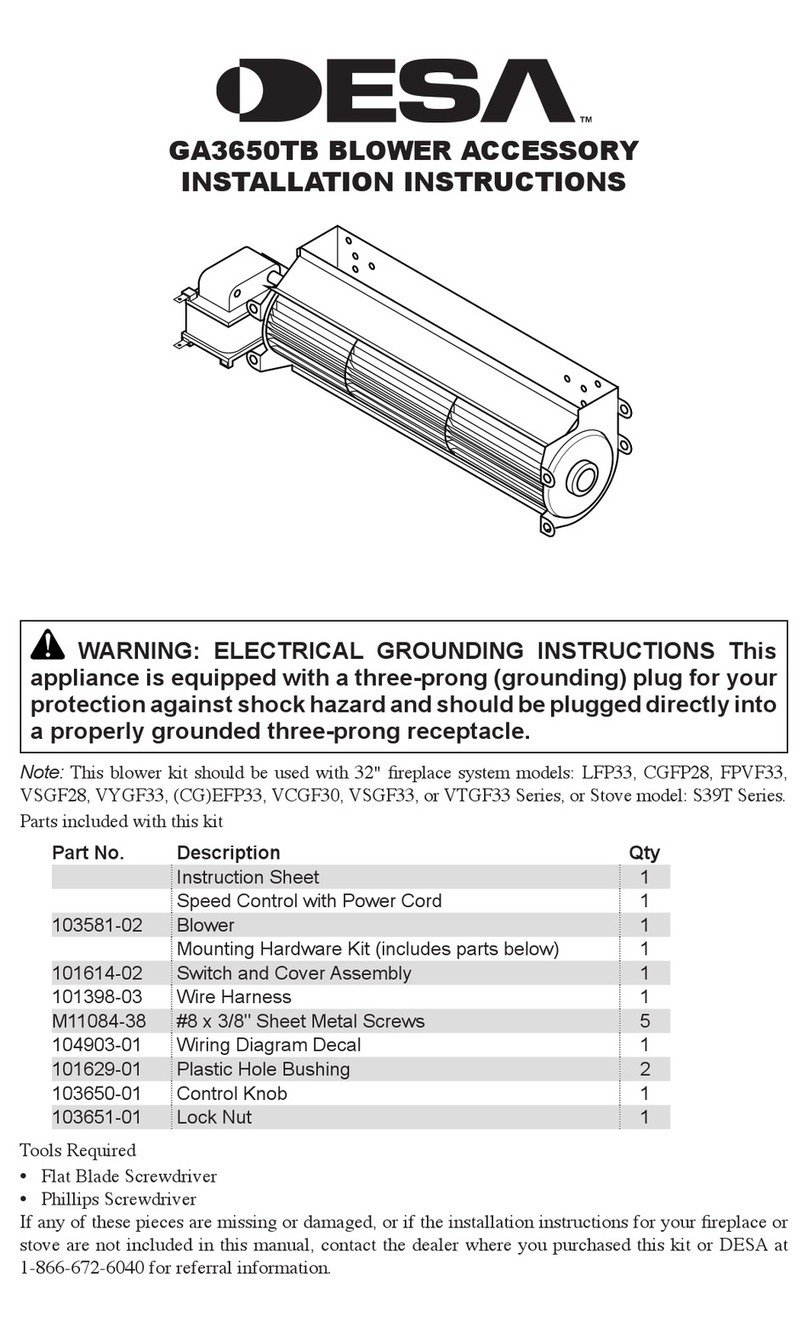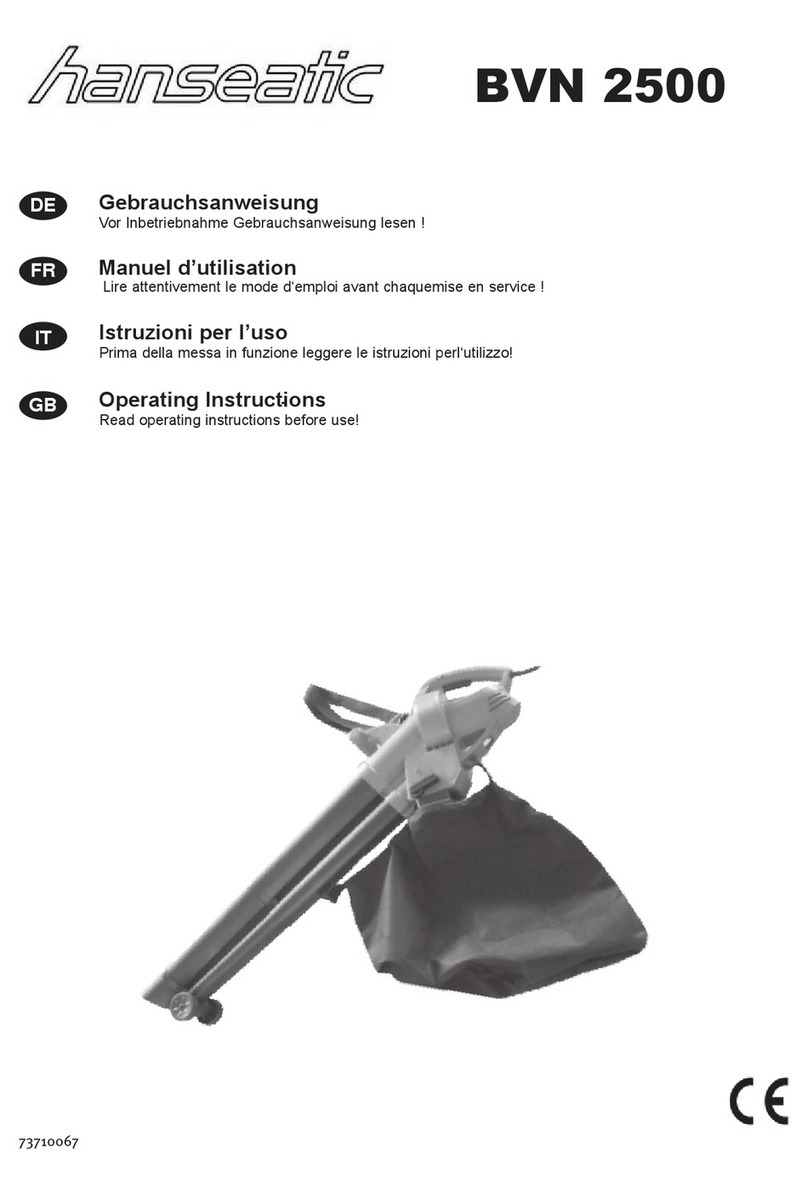
Dimensionare le tubazioni e scegliere accessori che contengano al
minimo le perdite di carico, pertanto:
• non montare tubi di diametro inferiore a quello delle bocche
della macchina; installando più macchine in parallelo,
dimensionare in proporzione il collettore e la linea principale;
• non impiegare gomiti, ma curve ad ampio raggio;
• non installare valvole con passaggio ridotto rispetto al
nominale e valvole di ritegno con otturatore contrastato da
molla (la valvola di ritegno con minore perdita di carico é quella
a clapet alleggerito);
• nei casi di impiego per l'ossigenazione, scegliere diffusori a
bassa resistenza di passaggio (bassa perdita di carico) e non
dimenticare che le candele e i setti porosi aumentano le
perdite di carico nel tempo a causa del progressivo
intasamento.
Per evitare sovraccarichi causati da variazioni della pressione,
installare una valvola di sicurezza.
Collegare il motore e controllare il senso di rotazione prima della
connessione alle condotte.
I compressori - aspiratori ‘SCL K’ sono già muniti nelle costruzioni
standard di silenziatori di aspirazione e mandata (i valori Lp / Lw di
rumorosità, con flusso di mandata ed aspirazione convogliato,
sono riportati in DATI CARATTERISTICI - pag. 3/4); nel caso di
aspirazione o scarico in atmosfera il rumore del flusso libero può
essere smorzato con attenuatori supplementari.
In ogni condizione é comunque da evitare l'installazione delle unità
su strutture che possono trasmettere o amplificare il rumore
(serbatoi, piastre in lamiera ecc.).
Vedere nella pagina seguente gli schemi di installazione.
Richiedere ulteriori informazioni come nel caso di necessità di
abbattimento generale della rumorosità mediante cabina afona.
1.3.2 MOTORE ELETTRICO
ATTENZIONE: PRIMA DI ESEGUIRE QUALSIASI OPERAZIONE
ASSICURARSI CHE LA LINEA NON SIA SOTTO TENSIONE.
Il motore elettrico è dimensionato per funzionare in ambiente con
temperatura di -15 ÷ +40 °C ad un’altitudine massima di 1000 m.
Verificare che i dati di targa siano compatibili con tensione e
frequenza di linea.
E' ammesso uno scostamento di tensione rispetto al valore
nominale pari al ± 10%.
In condizioni diverse il motore non può essere impiegato a pieno
carico e possono sorgere difficoltà d’avviamento particolarmente
nel caso d’alimentazione monofase.
Procedere al collegamento facendo riferimento allo schema
contenuto nella scatola morsettiera.
Connettere il cavo di messa a terra al relativo morsetto e verificare
la capacità di dispersione.
I fusibili non costituiscono una protezione per il motore, ma solo
proteggono contro i corti circuiti.
La protezione con salvamotore (termico o amperometrico) é
indispensabile contro i rischi di sovraccarico, in mancanza di una
fase in rete, frequenza d’avviamenti troppo elevata, eccessiva
variazione della tensione o blocco del rotore.
Regolare il salvamotore sulla corrente nominale di targa come
valore massimo.
Dimensionare i fusibili tenendo in considerazione le correnti di
spunto, particolarmente nel caso d’avviamento diretto.
IN MANCANZA DI PROTEZIONE, DECADE IN TOTO LA
GARANZIA.
1.3.2.1 RILIEVI AMPEROMETRICI
I valori d’assorbimento s’intendono per l'esercizio nelle condizioni
nominali, tali scostamenti possono comportare variazioni fino al
10%.
Si possono riscontrare piccole differenze tra i valori di misura delle
fasi tollerabili fino a differenze del 9% (ref. IEC 34-1).
1.4 MESSA IN FUNZIONE
Alla messa in funzione dell'unità:
• Controllare la pressione o depressione d’esercizio; è
opportuno prevedere l'impiego di un adeguato manometro o
vuotometro.
• Controllare la taratura della valvola di sicurezza.
• Misurare l'assorbimento del motore e verificare rispetto al
valore di targa (ref. par. 1.3.2.1).
• Tarare il salvamotore di conseguenza.
• Dopo un'ora di funzionamento, controllare che la corrente
assorbita non superi i valori ammessi.
1.5 REGOLAZIONE
I compressori - aspiratori ‘SCL K’ sì auto regolano sul valore di
pressione differenziale richiesto all'utilizzo.
A pressioni differenziali crescenti corrispondono valori maggiori di
potenza assorbita ed incremento di temperatura, fino a
raggiungere condizioni di crisi per la macchina e/o il motore nel
caso di supero dei valori di pressione massimi consentiti.
Le perdite di carico delle condotte sono frequentemente
sottovalutate, quando sono fattori importanti per la pressione
differenziale d’esercizio.
La regolazione della pressione differenziale d’esercizio può essere
ottenuta, se non eliminando ostruzioni e strozzamenti,
parzializzando la portata.
Per diminuire la portata non strozzare l'aspirazione o la mandata
ma montare una valvola in derivazione.
1.6 MANUTENZIONE
Durante l'esercizio, ogni 10/15 gg., pulire la cartuccia del filtro.
In ambiente molto polveroso sostituirla con frequenza.
La cartuccia sporca determina forte resistenza in aspirazione in
conseguenza aumentano: il differenziale di pressione, la potenza
assorbita, la temperatura d’esercizio.
Controllare che il differenziale di pressione non subisca modifiche
nel tempo.
E' importante che le unità in esercizio siano periodicamente
sottoposte, da parte di personale qualificato, ad ispezioni al fine di
evitare guasti che possano direttamente o indirettamente
provocare danni.
Variazioni delle normali condizioni di lavoro (incrementi di potenza
assorbita, rumorosità anomala, vibrazioni) sono indizi di un non
corretto funzionamento.
Vedere il paragrafo 5 PROBLEMI DI FUNZIONAMENTO per
intervenire e/o prevenire possibili rotture o guasti.
Nelle normali condizioni di esercizio (valori riportati in DATI
CARATTERISTICI - pag. 3/4) i cuscinetti della macchina devono
essere sostituiti, da parte del personale qualificato, dopo max.
25.000 ore di esercizio o al più tardi dopo 4 anni.
In caso di problemi richiedere la nostra assistenza o quella del ns.
rivenditore.
Le riparazioni eseguite da terzi non sono garantite.
Rimuovere periodicamente eventuali depositi dalle superfici
esterne che possono impedire il corretto scambio di calore.
Impegni, accordi o rapporti giuridici sono regolati dal
contratto di vendita corrispondente. I suddetti non sono in
alcun modo limitati dal contenuto del presente manuale.
La qualità, dei materiali e delle lavorazioni, è garantita come
da condizioni generali di vendita.
La garanzia decade per: danni subiti durante il trasporto; per
cattiva conservazione; inconvenienti da errato montaggio;
imperizia d'uso; superamento dei limiti di prestazione;
eccessive sollecitazioni meccaniche e/o elettriche.
Conservare l'imballo per eventuali impieghi futuri
I - 7/39
